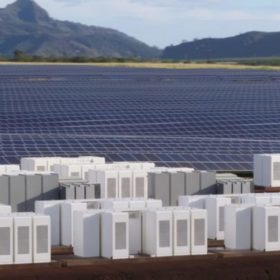BloombergNEF said in a new report that it expects clean hydrogen supply to increase 30-fold to 16.4 million metric tons (MT) per year by 2030, driven by supportive policy and a maturing project pipeline. However, it claimed that governments throughout the world will still miss their targets, and most projects will be shelved or delayed.
“The vast majority of projects that have been announced by 2030 don’t have the necessary conditions right now that, we think, will make them successful and take [final investment decisions],” Adithya Bhashyam, lead author of the report, told pv magazine. “The majority of the electrolysis projects in our forecast, 60%, are still in the early stages of planning; they have not done detailed engineering studies yet, and so on. They really rely on the implementation of policies to go ahead.”
In its bottom-up analysis, BloombergNEF said it expects that just 30% of the 1,600 projects that have been announced to date will actually materialize by 2030. It claimed that the remaining 70% will be delayed or canceled, primarily because of low demand for hydrogen.
The announced projects would produce 64.6 MT. According to BloombergNEF’s “Hydrogen Supply Outlook” report, the 477 projects that will likely go ahead would produce 16.4 MT. Current gray hydrogen demand stands at 95 MT.

Image: BNEF
Green hydrogen projects are the ones lagging behind the most.
“Electrolyzer projects will significantly undershoot government targets for electrolysis deployment,” said Bhashyam. “Government targets for electrolysis deployment add up to 114 GW on a national level. If you add the EU target of producing 10 MT of hydrogen domestically, that means another 120 GW. So we are saying on the electrolysis capacity side, including the EU, they will miss their targets by more than half. There is a huge gap between ambitions and reality.”
BloombergNEF said it expects electrolysis capacity to be primarily based in China, with 37% of global capacity, followed by Europe with 27%. However, installed electrolysis capacity will not meet global pledges, mostly because of low demand for green hydrogen from the global economy. That said, electrolyzer manufacturing capacity is more than in line with green hydrogen targets.
“The stack assembly capacity for electrolyzers globally announced by developers could reach 54 GW by the end of 2024, which rises to over 70 GW by the end of 2025. Most of these suppliers, particularly in Western markets, can’t deliver on this nameplate capacity because they don’t have the upstream supply chain,” said Bhashyam. “But, also if you add a massive discount on the available manufacturing capacity today, we are in an oversupply situation.”
Green, blue, gray
BloombergNEF said that green hydrogen production should reach 9.6 MT per year by 2030, with blue hydrogen hitting 6.8 MT. The global blue hydrogen targets are less ambitious, but these projects are currently more advanced than for green hydrogen production.
“Around 95 GW of electrolyzers could become operational by the end of 2030, almost 10x the capacity that is already past final investment decision today,” BNEF said. “Around 40% of this 95 GW is past [final investment decision] or in advanced planning compared to 60% for all low-carbon [hydrogen] supply, showing the lower maturity of electrolysis projects relative to blue [hydrogen].”
The report said that most forecasted electrolyzer capacity (~58 GW) is driven by announced policies and is, therefore still subject to uncertainty around policy implementation.
The United States will likely lead the blue hydrogen market. The world’s main economy should become the largest producer of low-carbon hydrogen by 2030, accounting for almost 37% of global supply, most of it blue. The US market is expected to lag behind Europe and China until 2027, but will overcome both regions in 2028.
Bhashyam said that Germany is increasingly less reluctant to adopt blue hydrogen. Europe’s major economy is coordinating its energy policies with future exporters such as Australia and Canada.
“Blue hydrogen projects are quite advanced, being very close to take a FID and having done all the required engineering studies,” said Bhashyam.
He added that not all low-carbon hydrogen would replace gray hydrogen.
“There are new uses of low-carbon hydrogen, as a fuel for ship or to make steel, for instance,” he said.
The report said that governments will likely miss their aggregate 2030 hydrogen demand goals by almost two-thirds due to insufficient policy support. China, Europe, and the United States could account for more than 80% of low-carbon hydrogen. Latin America and Australia are expected to play a minor role in the global low-carbon hydrogen market to 2030.
“Export markets like Latin America don’t have strong policies for local hydrogen uses. Now they have a huge project pipeline proposed, looking to export, but we don’t see enough demand from importers for the majority of these projects to go ahead by 2030,” said Bhashyam, adding that markets like Canada are in a better position, because of subsidies for export projects.
Key risks
BloombergNEF said it sees two significant uncertainties: the deployment of hydrogen in China and the eventual revision of announced policies, mainly due to upcoming elections.
“BNEF’s outlook accounts for policy delays but major changes to announced programs, such as a remodel of the US [Inflation Reduction Act] tax credits after the November presidential election, would impact this forecast,” said the company. “New policies or advanced projects that do not take FID could also change BNEF’s outlook.”
Bhashyam noted that upcoming elections in Europe could also affect green hydrogen projects, but to a lesser extent.
“European deployment is quite strong in our outlook because of the announced policies that Europe has proposed on a EU level, but also on a member-state level. On the electrolysis side, a lot of our forecast in Europe is based on the fact that announced auctions for hydrogen production continues to happen,” said Bhashyam, adding that changes in these auctions could alter the pace of European green hydrogen adoption.
This content is protected by copyright and may not be reused. If you want to cooperate with us and would like to reuse some of our content, please contact: editors@pv-magazine.com.








By submitting this form you agree to pv magazine using your data for the purposes of publishing your comment.
Your personal data will only be disclosed or otherwise transmitted to third parties for the purposes of spam filtering or if this is necessary for technical maintenance of the website. Any other transfer to third parties will not take place unless this is justified on the basis of applicable data protection regulations or if pv magazine is legally obliged to do so.
You may revoke this consent at any time with effect for the future, in which case your personal data will be deleted immediately. Otherwise, your data will be deleted if pv magazine has processed your request or the purpose of data storage is fulfilled.
Further information on data privacy can be found in our Data Protection Policy.